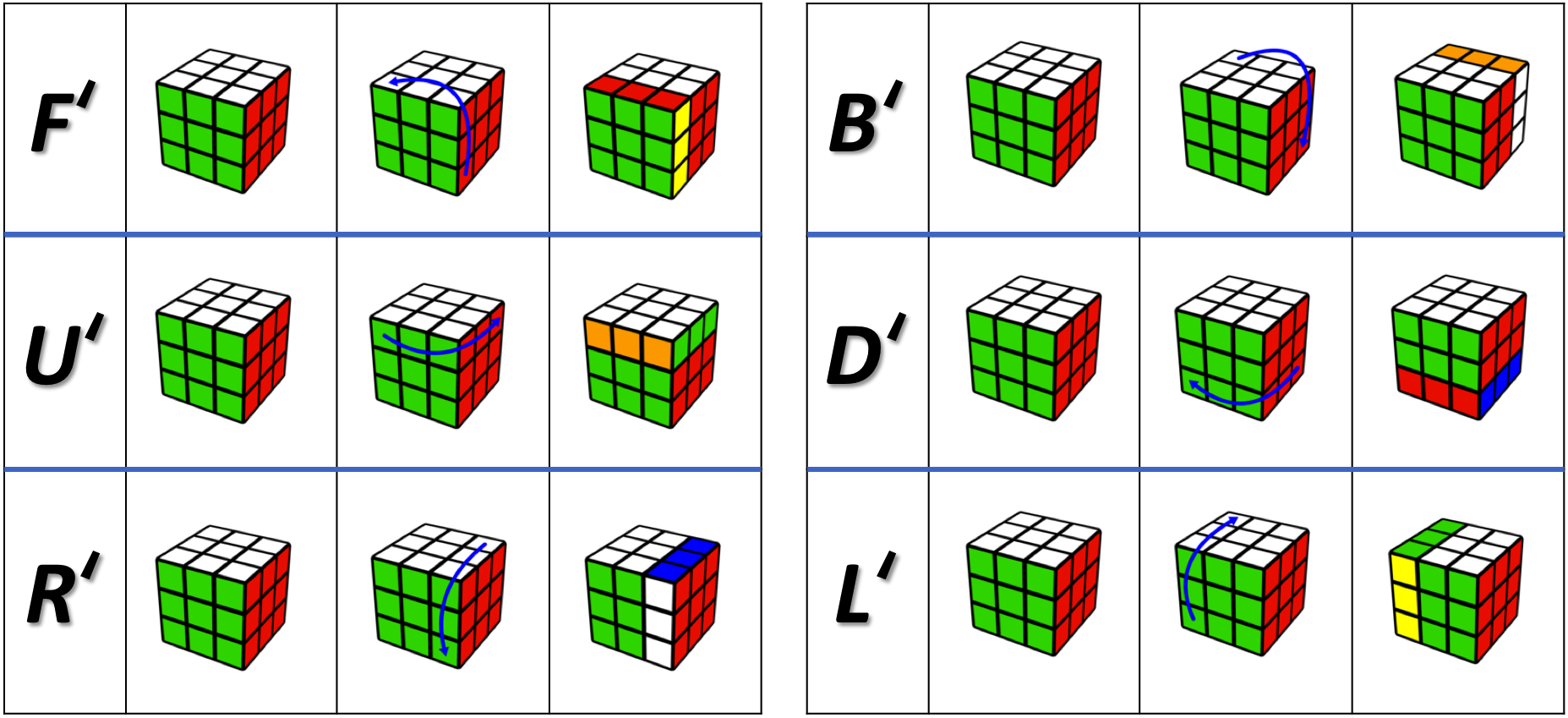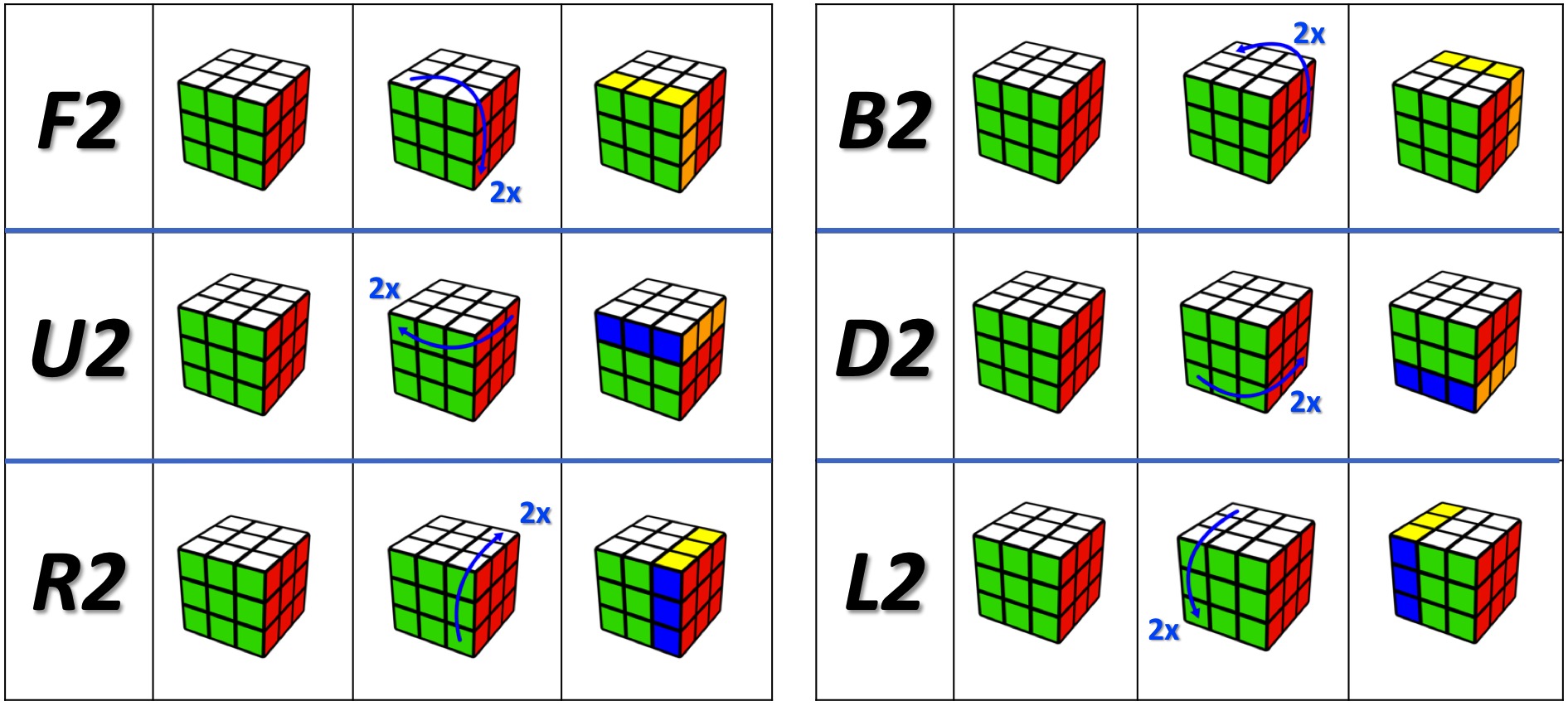Basic moves
Now you should be able to orientate yourself on your cube, hence it is time to
define the basic moves which you can apply to your cube:
• to each side of the cube a letter is assigned: R = Right,
L = Left,
U = Up,
D = Down,
F = Front
and B = Back.
– these letters mean " turn the, by looking on the front side, intended side by 90 degrees clockwise (if this side is in front of you)".

• the basic inverse moves R' ,
L' ,
U' ,
D' ,
F'
and B'
are inverses to the corresponding basic move.
– these letters mean " turn the, by looking on the front side, intended side by 90 degrees counterclockwise (if this side is in front of you)".


• if a move has to be done two times in a row, this will be denoted by:
R2 ,
L2 ,
U2 ,
D2 ,
F2
and B2

Finally there remain only a few remarks to point out:
• the basic inverse moves R′ ,
L′,
U′,
D′,
F′,
B′
give the same result as applying the corresponding basic move 3 times in a row, i.e.
R′ =
R R R
or
D′ =
D D D or
...
• applying a basic move two times gives the same result as
applying the corresponding inverse move two times, i.e
R′ R′
=
R2
or
D′ D′
=
D2
or ...
• applying a basic move 4 times in a row gives the same result
as doing no move at all.

Furthermore, during the solution you will see a lot of pictures which contain the following arrow:

This will always mean that on the left side of this arrow there will be your cube in the current state and on the right side
of it you will see the cube after you've applied some given moves or a rotation of the entire cube to it. For example applying the move F R to a cube which is in the solved state would be described by the following picture:


Before you start to solve your cube you can find under the following link a sheet with all
the moves, so that you can print it out and take a look if you need it:
Moves.pdf
or